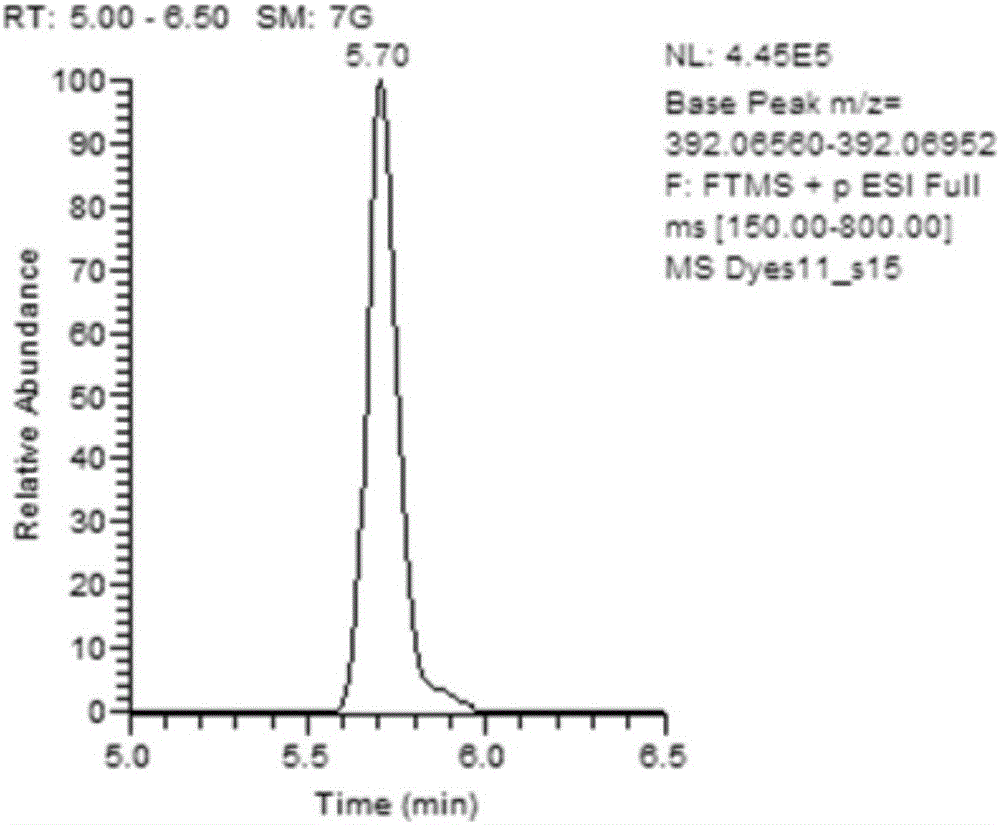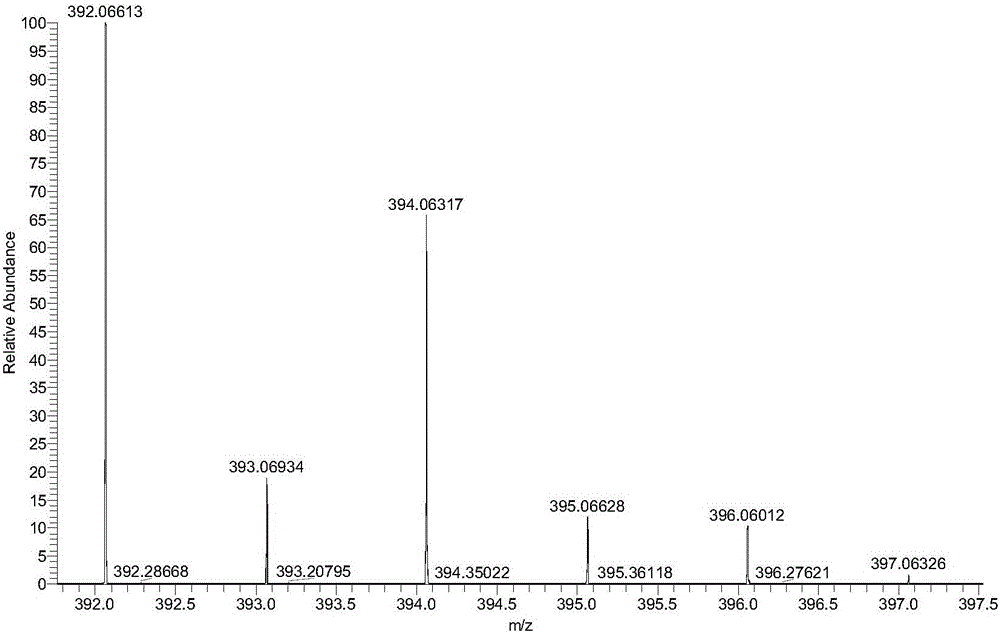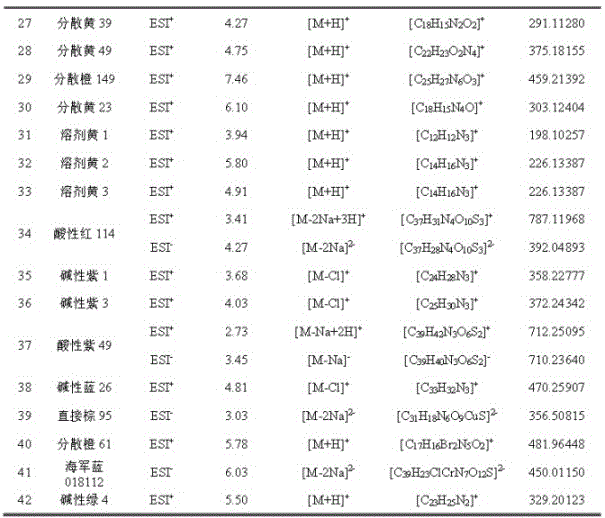Method for simultaneously screening and analyzing forbidden and restricted dye in textiles
A textile and screening technology, applied in the field of analytical chemistry, can solve problems such as false positives in test results, simultaneous analysis and determination of multiple components, and difficulty in separation, so as to eliminate complex matrix interference, enrich sample detection information, and improve detection efficiency. Effect
- Summary
- Abstract
- Description
- Claims
- Application Information
AI Technical Summary
Problems solved by technology
Method used
Image
Examples
Embodiment Construction
[0023] The present invention will be further described below in conjunction with the accompanying drawings and through specific examples.
[0024] The following specific examples take 40 textile samples as an example to carry out the rapid screening of prohibited and restricted dyes, wherein one sample is screened as a positive sample containing Disperse Orange 37 / 76, and the other 39 samples are negative samples (results are shown in the table 2).
[0025] The instruments used are: liquid chromatography system: ACQUITY Ultra Performance LC ultra-high performance liquid chromatography (Waters Company), high-resolution mass spectrometry system: LTQ-Orbitrap XL linear ion trap-electrostatic field orbitrap combined mass spectrometer (Thermo Company).
[0026] The chromatographic conditions are:
[0027] Column: CAPCELL PAK UG120C 18 Chromatographic column (100 mm × 2.0 mm, 5 µm);
[0028] Column temperature: 30°C;
[0029] Injection volume: 10 µL;
[0030] Sample chamber tem...
PUM
 Login to View More
Login to View More Abstract
Description
Claims
Application Information
 Login to View More
Login to View More - Generate Ideas
- Intellectual Property
- Life Sciences
- Materials
- Tech Scout
- Unparalleled Data Quality
- Higher Quality Content
- 60% Fewer Hallucinations
Browse by: Latest US Patents, China's latest patents, Technical Efficacy Thesaurus, Application Domain, Technology Topic, Popular Technical Reports.
© 2025 PatSnap. All rights reserved.Legal|Privacy policy|Modern Slavery Act Transparency Statement|Sitemap|About US| Contact US: help@patsnap.com



